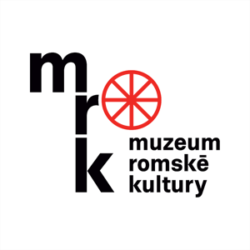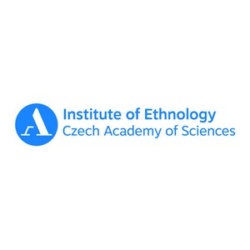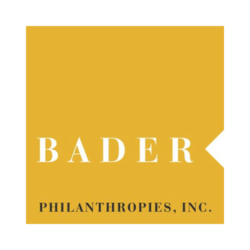Bohuslav Kýr
Bohuslav Kýr, born 1921 in Strážnice, Hodonín district; died 1993
-
Testimony abstract
Bohuslav Kýr’s family lived in Strážnice. His father, who died in 1926, was for many years a coachman on the estate of Count Magnis, while his mother was a housewife who took care of six children – sister Růžena (born 1924) and brothers Martin (born 1911), František (born 1914), Karel (born 1919) and Adam (born 1926, the youngest). After leaving school, the older two, Martin and František, went to work to help support the family. After completing municipal school, Bohuslav Kýr was apprenticed as a bricklayer for a year with a relative, František Kubík, and then apprenticed as a tailor in Strážnice with the tailor called Ježek,[1] also completing three years of further education. His older brother Karel trained as a shoemaker.
- [1] First name not given.
Bohuslav Kýr started working for the Baťa company in Zlín in 1939 as a worker on the construction of the railway line to Vizovice. After a while, about sixty workers were sent to a labour camp in Linz, but typhus broke out there and he fled. In 1941, he reached Koblenz, where he found work in a fireclay factory, but he did not like it there, and about November, he says, he again fled. He was caught at the Protectorate border, arrested and imprisoned; he was released in January 1942.[1] He returned to his mother in Strážnice and started working as a tailor in the SLUM folk-costume cooperative. He had to leave there[2] together with his cousin Josef Kýr and another relative Jiří Kýr, and worked on the construction of the road to Tišnov. Subsequently, he and six other men were transferred to Slavkov, where he stayed for several weeks. From there, together with Jiří Kýr, he was taken to Brno, where they were the only two Roma to join the transport to the main [concentration] camp at Auschwitz. He does not remember the exact date, but it was in the autumn of 1942.
He reported to the main camp in Auschwitz as a bricklayer. He was only there for a short time, and was soon transferred to Birkenau [Auschwitz II-Birkenau] together with a construction team, where they built ovens and the heating ducts between them in the future so-called Gypsy camp. Here he was interrogated in the spring [1943][3] to find out why he was imprisoned. When he answered the question as to whether he wanted to meet his brothers in the affirmative, they put him in a block, the number of which he no longer remembers, where he did indeed meet his brothers. The Blockalteste there was a brutish Roma from the Sudetenland who spoke Czech. Kýr and his brothers Martin, Adam and Karel were soon transferred back to the main camp to block 18 and were again assigned to the construction team.[4] They built the road to the I. G. Farben factory and also carried building materials for the SS. One Sunday while boxing, he was recognized by František Stanislav,[5] who had been a deputy of the People's Party in Strážnice, where Bohuslav Kýr came from. Thanks to him, he got into the tailor's shop, where he stayed until his departure to the concentration camp in Natzweiler.[6] Kýr says there were many people on the transport, but he does not know the exact number. They had to walk half an hour uphill from the train station to the camp. It was not large, relatively new, and had its own crematorium. Kýr was in block 6, but a few days later he was brought to the infirmary together with eleven other prisoners, six German and five Czech. With him were Antonín Kýr, Jan Daniel from Petrovice, Jaroslav Kýr and Jiří Kýr, all about the same age. The next day they were given an injection in the arm, and three days later they had high fevers that lasted ten to fourteen days. They kept on having their temperature taken and receiving injections to lower it. Kýr's wound initially festered but healed after a few weeks. None of the Czechs died; it is not known what happened to the Germans. Later he learned that it was an experiment with an African disease.[7] After the medical experiment was completed, the five Czech prisoners returned to the camp, but Kýr was chosen by the SS doctor Krejčí[8] as a nurse and house servant. Krejčí lived with his wife and child in a villa outside the camp gate, and Bohuslav Kýr took care of their household – washing, ironing, cleaning and also sewing. At first he was accompanied to the villa by a guard, but later he was allowed to go alone only under the supervision of the guard at the camp gate. Dr. Krejčí was from Opava, and spoke German with Kýr in the camp, but at home they spoke Czech. At that time, Kýr was not abused and received more food, but he was not in contact with his fellow prisoners.
In the spring of 1944, Dr. Krejčí was on leave and new experiments were being conducted in the camp. Kýr was again among the twelve selected prisoners who were loaded into a car. After about 20 minutes, they arrived at a low brick building in which Kýr saw test tubes through the open door. The guards then divided them into groups of three; Kýr was with two Poles, one about the same age and the other a little older. The guards led them into a small padded room with a high ceiling, a small window near the ceiling and a peephole in the door. The SS man behind them threw in two test tubes, which broke, and before closing the door behind them, ordered them to walk around. He checked on them every five minutes. Bohuslav Kýr remembered the CPO [civil air defence] course he had taken, and wet the hem of his shirt with urine, pressing it to his face. He also lay down on the floor so that he would not get tired walking. After fifteen minutes, one of the Poles fell to the ground, and after a while the other one did too. After twenty-five minutes they stopped checking them and came for them with tongs, which they used to grab them below the knees, loaded them and took them to the crematorium. The civilian and the two SS men who were taking their pulse said "Noch nicht" [Not yet] over Kýr and left. The two Poles died shortly afterwards, and Kýr was given cigarettes by the kapo of the crematorium and carried on a stretcher to the infirmary, where he was given beef broth and, shortly afterwards, better food. When Dr. Krejčí returned from his holiday and found out what had happened to Kýr, he brought him butter and more food to make up for it.
When, after about a month, another [medical] experiment with gas was about to take place, Dr. Krejčí arranged for Kýr to leave with a work party for a new camp,[9] about fifteen kilometres from Natzweiler.[10] Kýr took with him a letter from Krejčí to the commander there, who also spoke Czech; Kýr states that the commander probably knew Dr. Krejčí well.
In this camp, Kýr worked underground, probably making parts for the V2 weapon. He and his team cleaned the tracks, with civilians and prisoners working together. Thanks to a song he sang [Why did the owl hoot so much (ed.)], he made the acquaintance of a compatriot from Uherský Ostroh who was there as a civilian worker; he was probably the one who threw him a bag with some food. For several days he did other work, and then finally he carried jugs of tea, cocoa or coffee to the SS canteen before dinner and breakfast, where he poured the drinks into the prepared cups. Thanks to this work, he received new clothes.
After some time he was transferred back to Natzweiler and again worked at Dr. Krejčí's infirmary. He learned from the kapo at the crematorium that during the last gas experiment the prisoners had to be naked and they all died.
After about a month, Dr. Krejčí was transferred and left Natzweiler with his entire family. Kýr was placed with 80 or 90 prisoners on a transport to Dachau, where he first worked on a vegetable plantation, and then went to Munich railway station to pull out the dead who had been buried under the rubble in the bombing. At Dachau he met Antonin Kýr, with whom he had undergone the experiment with the African disease. From Dachau, Kýr was taken to Neuengamme, from there to Oranienburg and then back to Neuengamme; he then dug trenches near the Danish border and was also at Meppen near the Dutch border, where there was an airfield. From there he was evacuated to the prison camp Samposten near Bremen, where he was liberated by the American Army.
- [1] According to camp records, he was imprisoned in the so-called Hodonín Gypsy Camp from 5 August to 18 September 1942. (ed.)
- [2] He does not give a reason.
- [3] Probably after the camp was up and running.
- [4] Bohuslav Kýr's name does not appear on the lists of so-called a-socials transported from Brno to the Auschwitz I camp in 1942-1944. He was registered in the Auschwitz II-Birkenau camp from 19 March to 4 April 1943, when he was transferred to the Auschwitz I tribal camp.
- [5] František Stanislav (1893-1941), mayor of Strážnice in 1932-1940, deputy of the National Assembly for the Czechoslovak People's Party in 1925-1939. In February 1941 he was deported to the Auschwitz concentration camp, where he died in July of the same year. A meeting between Bohuslav Kýr and František Stanislav in later years is therefore unlikely.
- [6] The transport to the Natzweiler-Struthof camp was dispatched on 19 November 1943. (ed.)
- [7] Unspecified.
- [8] First name not given.
- [9] No name given.
- [10] The camp had been in operation since 1941, and shortly before the evacuation there were 18,000 prisoners, including 74 German Roma. (ed.)
Bohuslav Kýr made his way home via Nuremberg and Prague, arriving in Strážnice on 26 July 1945. He was reunited with his brothers František and Karel and his sister Růžena.
How to cite abstract
Abstract of testimony from: NEČAS, Ctibor, ed. Nemůžeme zapomenout = Našťi bisteras : nucená táborová koncentrace ve vyprávěních romských pamětníků. Olomouc: Univerzita Palackého, 1994, 174-177. Testimonies of the Roma and Sinti. Project of the Prague Forum for Romani Histories, https://www.romatestimonies.com/testimony/bohuslav-kyr (accessed 10/31/2025) -
Origin of Testimony
A free transcript of Kýr’s recollection was made by Vlasta Kladivová on 15 September 1982.
-
Where to find this testimony




